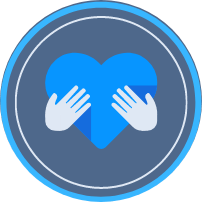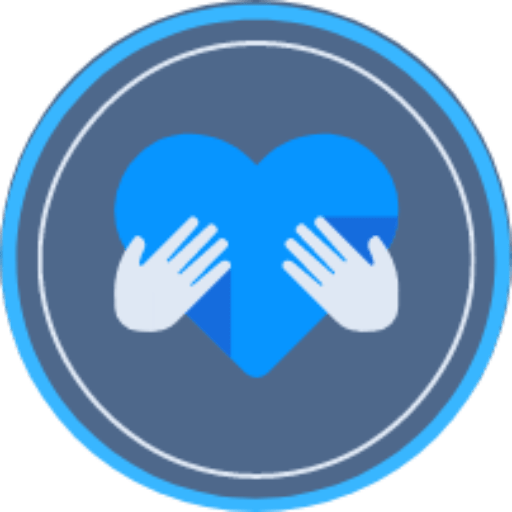Book Appointment Now
Healing Journey: Why Your Healing Journey Might Be Holding You Back More Than Helping You?

Here is a question for you: how many times have you added stories on blogs to your reading list? You might have created reading lists for all kinds of categories — from manipulators, red flags, psychology, PTSD, CPTSD, and healing, to name but a few.
That’s mostly what we do on blogs: we save stories so we can read them later, and we end up piling up lists and lists of stories we never even apply in real life. We just save them for later, in an effort to refer to them someday.
Procrastilearning: When Learning Becomes a Way to Avoid Action
I’ve done that as well — piled up more and more without doing what matters most: taking action or applying those lessons and insights where they matter most, which is real life.
That’s when I learned of the term procrastilearning, which simply means hiding behind learning to avoid taking action — or, put simply, procrastinating by learning.
This is where, instead of using the insights and knowledge you already have to act on your habits, behaviours, goals, or dreams, you use books and studies to keep pushing them further away.
The Inner Voice That Keeps Whispering, “Just One More Book”
This is where your inner voice keeps shouting at you,
“Another one — add that article to your reading list, it’s interesting and insightful,”
or “Buy another healing book, it’s the latest from a renowned trauma expert or a famous author.”
And then, years down the line, you’re surprised at how little progress you’ve made in your journey.
Are You Progressing or Regressing?
In fact, when you look at yourself, you realize that you’re regressing rather than progressing with the reading lists you’re piling up. That’s how we often find ourselves in the healing journey — we make great steps forward, we feel good, but somewhere inside you, a voice still whispers,
“Just one more book.”
The Hospital Analogy for Healing
I used this analogy the other day with a friend who was going through a similar situation.
It’s like when you go to a hospital — you trust the doctors, take the medicine, and then go home and continue with your life, believing and knowing you will heal if you keep taking the prescription given by the doctor.
You don’t hover around the hospital; you go back to your family, your friends, your hobbies, your career, and all those logical aspects of life.
Why You Shouldn’t Hover Around Your Emotional Symptoms
That’s the same thing that should happen with emotional healing — we shouldn’t hover too much around the symptom. Because if you hover, you’ll find a symptom, or your mind will keep digging for wounds that aren’t even there.
The mind is sneaky and loves clinging to familiar territory.
When Healing Becomes Part of Your Identity
For example, if you’ve been through a traumatic situation or have been stuck with a problem and have already gone through therapy, the best place to be is not online reading more trauma articles or in forums.
The best place would be far away from that — doing something else — and allowing your mind to integrate new insights about life.
This is because even though you may have healed from the emotional wounds, the scaffold of being a ‘trauma survivor’ can still remain as a part of your identity.
The Trap of the “Trauma Survivor” Identity
So, that identity will always be craving meaning and survival, and it will even feed you the illusion that you just need one more session, two more sessions, and so on — or that you need to try another new therapy technique.
It may even hide behind building a sense of purpose around it, or by being active in a healing forum, helping others.
Awareness: The Key to Avoiding Identity Traps
There’s nothing wrong with any of these — it’s just about understanding that healing doesn’t mean dropping your awareness. It means becoming aware of the subtle traps that may keep you entrenched in identities that develop as a result of your inner work.
When Healing Identities Become Dangerous
Those identities are particularly dangerous because you may not challenge or observe them as much — after all, you’ve “healed your trauma” and are even using your healing to help others.
But deep inside, you may still feel angry, dissatisfied with life, or tied to something you can’t quite explain.
Best advice, as I’ve said before: take a break from psychology and learning about narcissists or anything psychological for a moment, and live in the simple, real world for a little while.
Learn about politics, or if you want to read, choose fiction or any literature that doesn’t involve psychology.
Your mind needs rest to integrate the insights you’ve gained on your journey.
It doesn’t need another course, another session, or for you to save another article to come back to later.
Healing Is Like Treating a Physical Wound
In fact, the more you feed it, the more you’re postponing your transformation.
Imagine a real wound: once you tend to it, you just observe it with care until it heals — you don’t add other things on top.
You trust the doctor and let it heal naturally. That’s how you should treat your psychological wounds as well.
When you’ve uncovered them through therapy, it’s time to take a rest — just observe them, not in a hyperfocused way — and let them heal organically.
That’s the action we need to take, unless you’re doing this as a career — in that case, still take a break.
The Transformative Power of Taking a Break
The break will either show you how far you are from healing or how attached you’ve become to the hospital, the idea of healing, or the identity of being a survivor — without really making progress.
That’s a transformative realization: breaking free from our mind’s attachments or identifications with elements that limit our freedom.
For instance, you might not be making progress or gaining deep security within yourself; instead, you’re building security around labels or therapy. So, instead of therapy nudging you to become deeply secure within yourself, it ends up being your crutch.
What you hoped would help you walk becomes just another crutch.
That’s what happens when you don’t fully realize or honestly face your healing journey.
You end up piling on more and more instead of doing the opposite — dropping and discarding more and more.
Take Stock: Where Are You on Your Healing Journey?
· So, where are you?
· How many more articles or theories are you waiting for before you take action?
· How many more sessions do you need?
Also, it’s okay to change your therapist if you feel you’ve been going for a long time, but don’t let changing therapists become another escape route for your identity.
Just try taking a break first and go back to basics (therapy 101): observe your feelings, and you may realize that there was nothing wrong with you — you just lacked a deeper purpose beyond the therapist’s chair.
You’ve been hanging around the treatment table too much, and you needed some fresh air.
The Mind: Sneaky, Deceptive, and Hard to Outsmart
Here’s the thing: the mind is sneaky and deceptive, and it can fool even the psychologically smartest — or rather, those who think they are — and they get tricked the most.
It’s up to you to find out for yourself; no one can tell you otherwise. No one can tell if you’re postponing your problems to solve them later or escaping your miseries under the guise of learning.
But deep inside, that smirk on your face or that feeling of discomfort when your ideology is challenged knows that its time is up, and you need to observe it for its sneakiness.
Your ego feeds on sleep and is scared of your awakening.
Open your eyes — you’re not broken; you’re simply asleep.
Note from the Author
If you’re ready and you’d like my help with healing, finding peace in life and breaking free from these toxic patterns, then you can book a FREE BREAKTHROUGH CALL with me HERE. Happy healing 💙💙. Feel free to share and comment! Use this information with caution, it comes from my own thoughts & bias, experiences and research😊.







